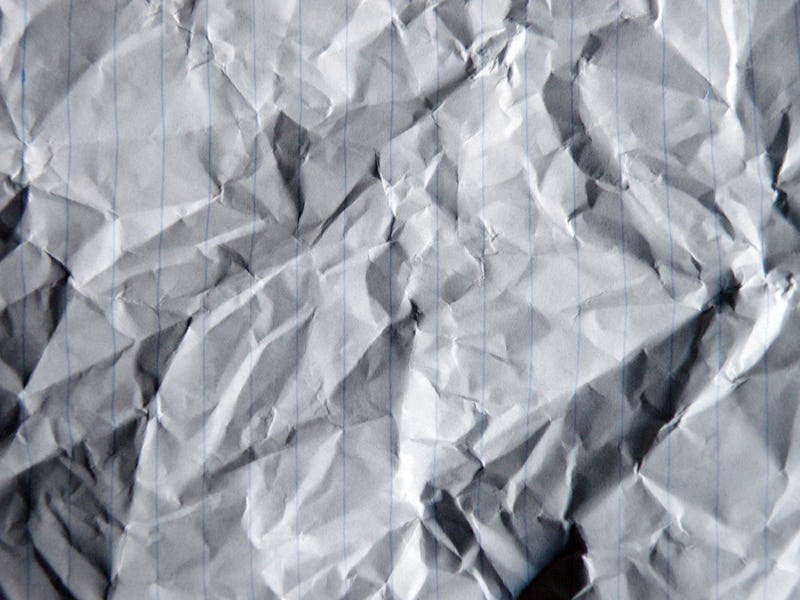How to Understand Your Brain Using Nothing but Paper
Origami makes everything better.

A wad of paper and your brain have more in common than you might think. As neuroscientist Suzana Herculano-Houzel and physicist Bruno Mota demonstrated at the Universidade Federal do Rio de Janeiro, Brazil, one equation does a remarkable job of describing both the wrinkles in mammalian brains and the crinkles in a paper ball. In their paper, published in early July in Science, the researchers sussed out precisely how “the product of cortical surface area and the square root of cortical thickness” mirror the scaling law of fractal patterns in crumpled paper.
This is the rare case where making a paper ball is going to be more helpful than any back-of-the-envelope calculations.
Wrinkles increase the surface area of the outer brain (the cortex), which, not coincidentally, contains huge a variety of neuronal cells. Mammal brains come in two stripes — the smoother, lissencephalic shapes of rodents, and the pruned gyrencephalic brains of whales, primates, and your dog.
What this model doesn’t explain is how the sulci (crevasses) and gryi (bulges) come about. Our hands externally crumple paper, whereas the structure of the brain arises from within as our brains grow inside our skulls — though we’re still not entirely sure how.
All of this folding, and the tens of billions of neurons spread throughout these cerebral waves, means there’s on the order of 100,000 km of interconnections in the brain.
To give a sense of the important role that folding plays in getting to pack, consider the exponential increase in thickness every time a piece of paper is halved. (The world record for folding paper in half is 12 times It only takes 103 folds to get a paper the length of the known universe: